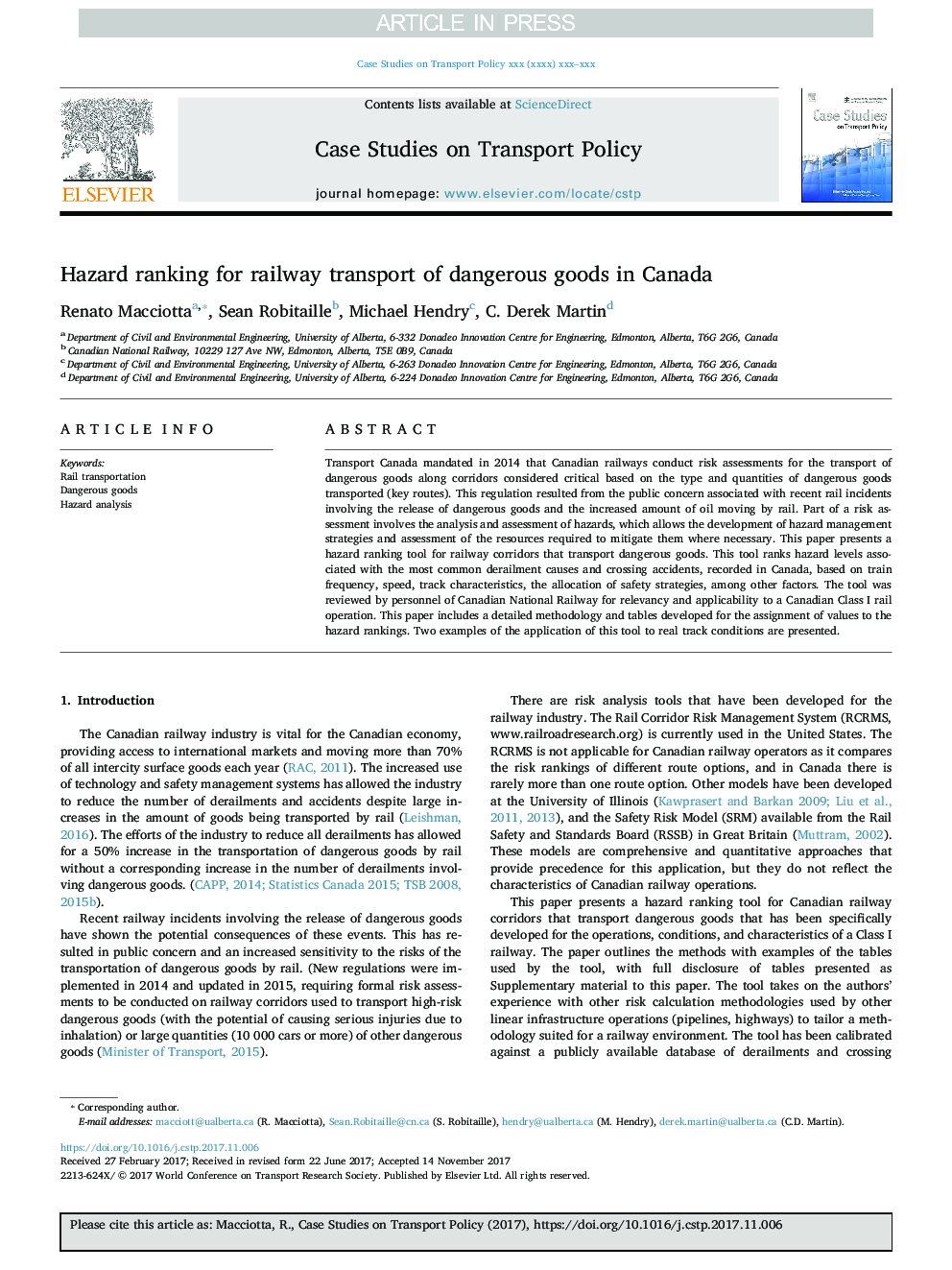| Article ID | Journal | Published Year | Pages | File Type |
|---|---|---|---|---|
| 6702189 | Case Studies on Transport Policy | 2018 | 8 Pages |
Abstract
Transport Canada mandated in 2014 that Canadian railways conduct risk assessments for the transport of dangerous goods along corridors considered critical based on the type and quantities of dangerous goods transported (key routes). This regulation resulted from the public concern associated with recent rail incidents involving the release of dangerous goods and the increased amount of oil moving by rail. Part of a risk assessment involves the analysis and assessment of hazards, which allows the development of hazard management strategies and assessment of the resources required to mitigate them where necessary. This paper presents a hazard ranking tool for railway corridors that transport dangerous goods. This tool ranks hazard levels associated with the most common derailment causes and crossing accidents, recorded in Canada, based on train frequency, speed, track characteristics, the allocation of safety strategies, among other factors. The tool was reviewed by personnel of Canadian National Railway for relevancy and applicability to a Canadian Class I rail operation. This paper includes a detailed methodology and tables developed for the assignment of values to the hazard rankings. Two examples of the application of this tool to real track conditions are presented.
Related Topics
Physical Sciences and Engineering
Engineering
Civil and Structural Engineering
Authors
Renato Macciotta, Sean Robitaille, Michael Hendry, C. Derek Martin,
